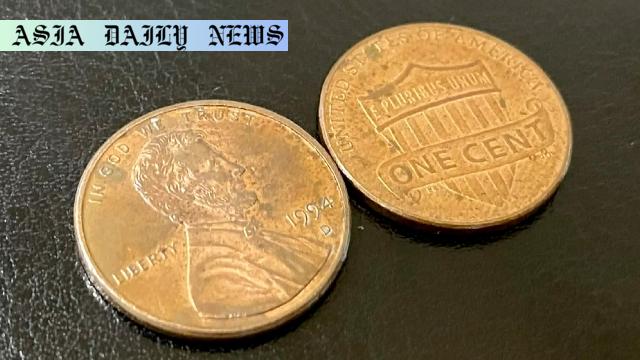Penny: Trump directs Treasury to halt production, saving taxpayers money.
President Trump announces a halt to penny production due to its inefficiency.
The penny’s production cost significantly exceeds its value.
The Department of Government Efficiency supports the decision.

Introduction to the Penny’s Production Costs
The U.S. government has decided to take a decisive step towards eliminating inefficiencies in its monetary system by halting the production of the penny. President Donald Trump, in an official announcement via social media, declared that he instructed Treasury Secretary Scott Bessent to end the decades-long minting of the one-cent coin. The decision was primarily motivated by the high production costs associated with minting the penny, which far exceed its actual monetary value of 0.01 dollars. This announcement aligns with the broader objectives of the newly-established Department of Government Efficiency.
Penny Costs Versus Value
For years, critics have pointed out the disproportionate costs linked to producing pennies. President Trump reiterated this long-standing argument in his statement, emphasizing, “For far too long, the United States has minted pennies which literally cost us more than 2 cents. This is so wasteful!” Recent reports from the Department of Government Efficiency quantified this wastage, revealing that a single penny now costs over 3 cents to manufacture, leading to significant financial burdens on taxpayers.
Who Gains from the Halt?
The decision is expected to save the government millions of dollars annually. The cessation of penny production frees up resources that can be utilized in areas with greater economic impact. It represents a move toward fiscal responsibility, echoing the sentiments of both the Trump administration and the Department of Government Efficiency. Led by entrepreneur Elon Musk, the department was specifically designed to identify and eliminate inefficiencies like the penny.
A Shift in Everyday Transactions
While the policy may seem minor, it will likely have notable ramifications in daily financial transactions. Cash transactions would need to adopt a rounding system, as is done in countries like Canada, which ceased their penny production in 2012. Rounding to the nearest five cents could simplify transactions, but it may also face initial pushback from consumers reluctant to abandon familiar habits.
Economic and Social Implications
The elimination of the penny raises questions about the longevity of other physical currencies. As digital payment systems continue to gain traction, the importance of coins and small currency denominations has dwindled. Furthermore, public opinion regarding this decision remains a mixed bag. While some applaud this cost-saving measure, others perceive it as a trivial move compared to broader fiscal challenges. Still, it underscores the government’s willingness to address even the smallest inefficiencies.
Elon Musk’s Role in the Push for Efficiency
It is noteworthy that the Department of Government Efficiency played a crucial role in influencing this decision. With Elon Musk at its helm, the department has gained attention for its unconventional yet effective approach to solving government spending issues. Musk’s involvement lends credibility to the assessment of penny production costs and highlights the innovative thinking behind the decision-making process.
The Future of US Currency
As the United States moves forward without the penny, discussions about other inefficient practices in government spending are likely to arise. The discontinuation of the penny could set a precedent for examining the practicality of other low-value denominations, such as the nickel. This decision marks the beginning of a broader conversation on the modernization and sustainability of U.S. currency.
Conclusion
Trump’s directive to halt the production of pennies signifies a commitment to reducing wasteful expenditures, no matter how small they may appear. Although change can always evoke skepticism, this step could pave the way for more substantial reforms in government operations. It remains to be seen whether these savings will lead to a broader cultural shift in how Americans view currency and government spending. For now, the penny’s era is at an end, and with it comes the promise of a more efficient future.
Commentary
An Emotional Farewell to the Penny
The penny has been a staple of American currency since its inception, and its discontinuation marks the end of an era steeped in nostalgia and tradition. While its value may be negligible by today’s standards, the penny holds symbolic meaning for countless Americans who associate it with childhood piggy banks, token purchases, and a sense of stability in an ever-changing economy. Yet, as President Trump has pointed out, the economic reality of its production no longer justifies its existence. This practical decision, while emotional for some, is an inevitable step toward modernization.
Eliminating Inefficiency: A Necessary Move
It is hard to argue against the logic of cutting costs that offer no tangible benefits. Advocates of the decision will likely highlight the excessive cost of penny production and the opportunity to redirect those funds toward more impactful areas of governance, such as healthcare, education, or infrastructure. The penny’s removal signals more than just a monetary adjustment; it reflects a commitment to scrutinizing government operations with a critical lens, searching for areas to streamline and improve.
Public Reactions and the Path Forward
While this policy is financially sound, it will undoubtedly face resistance from those who view it as an unnecessary meddling with tradition. Many consumers may feel inconvenienced by the adjustment period required for rounding during cash transactions. However, as other nations like Canada have demonstrated, society will adapt, and the change can ultimately result in a smoother economic system.
In the grand scheme of things, discontinuing the penny is a small yet meaningful shift in the U.S. government’s approach to cost management. Whether or not it leads to broader fiscal reforms remains to be seen, but for now, the penny’s departure serves as a reminder of the importance of efficiency in every aspect of governance.


